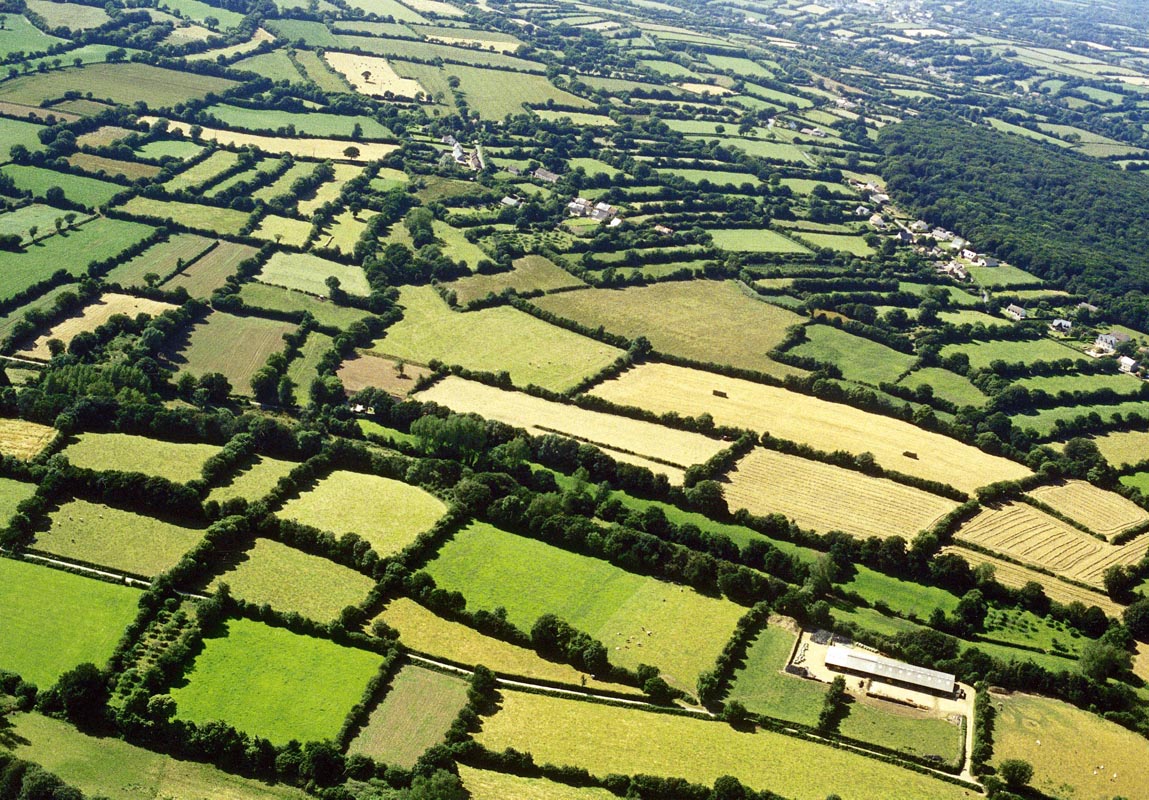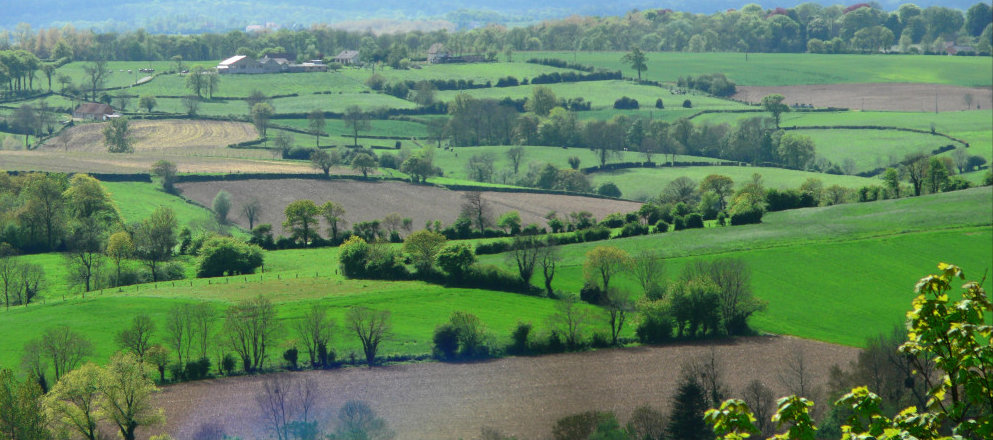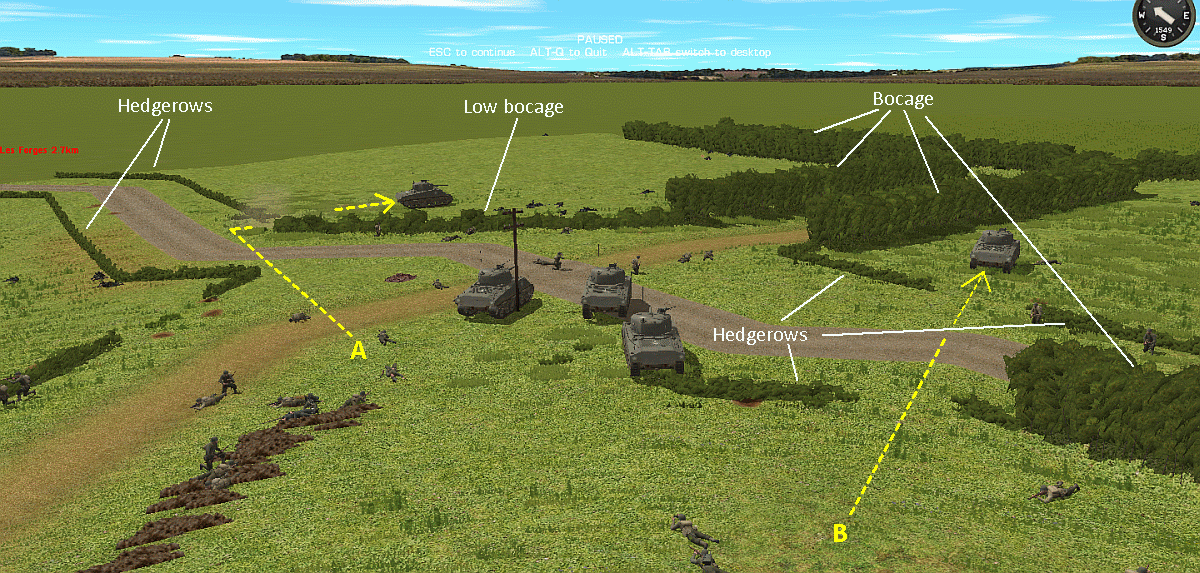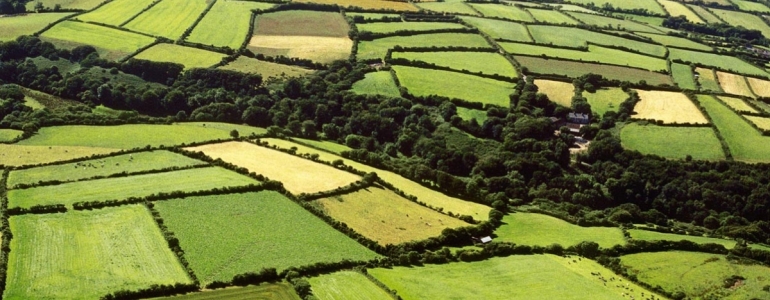Bocage
As Bocage is called in France a type of landscape, which is characterized as limiting agricultural fields through a large number of hedges or hedgerows. The Bocage is mainly used in the French Atlantic regions of Normandy, Brittany and Poitou- Charentes before, but occasionally also in the Massif Central and the North East of France. The term Bocage found in other Western European countries such as Belgium or the UK application in which there are large hedgerows. Due to their large diversity of small-scale landscape structures the Bocage today plays an important role in the maintenance of biodiversity.
History
The hedges were created by Celtic farmers about 2,000 years ago as field boundaries. In these two millennia were from the hedges up to three meters wide, but usually about a meter wide and up to three and a half meter high walls. The hedgerows are planted with various shrubs such as blackberry or Ligustersträuchern, so they can be a total of up to 4.5 meters high. Of the farmers a lot of the hedges were planted over the centuries with rows of trees of oak and ash, for example, which today dominate the characteristic picture of the Bocage.
By land consolidation in France and the increasing sprawl of natural areas in the 19th and 20th centuries the Bocage has been increasingly degraded. Today it has been preserved over a large area, particularly in the areas where livestock is of great importance and serve as natural hedges containment of livestock.
Ecological Significance
The Bocage, through its variety of landscape structures an important habitat for local flora and fauna dar. particular, the hedges play an important role as ecological corridors that allow animals and plants to migrate between habitats. But small rivers and ponds, riparian forests, groves or isolated trees and forest edges are for the biodiversity of the Bocage of central importance.
The hedges protect the often less fertile soils of the Bocage against soil erosion and provide farmers growing stock and fodder for the cattle. Because of the many environmental benefits of hedges began in the mid- 20th century to preserve old hedges, degraded to rebuild and to plant new ones.
Military Historical Significance
The hedgerows of the Bocage offered during the Allied invasion of Normandy good defense positions for the German troops. The hedgerows at a distance of 100 to 200 meters were limiting the viewing and field of fire of the Allied troops. They also presented an almost insurmountable obstacle for the Allied tanks dar. Roads asked the Army to antitank guns, so the allied advance was slowed down. In addition to that artillery fire remained largely ineffective because of the vegetation, because the shrapnel got stuck in the hedges, without causing any damage. The only advantage of the Bocage for the Allies was that the Sherman tank could cause the German Tiger tanks on the shorter distances considerably greater damage than in open terrain.
The Sergeant Curtis G. Culin U.S. Jr. welded two steel sickles from scrap remnants of destroyed beach obstacles on the bow of a tank and thus broke through the hedgerows. General Walter M. Robertson, the commander of the 2nd Infantry Division, told General Omar Bradley of Culins device, whereupon Bradley ordered to equip as many tanks as possible with it. With this device, the Allies finally succeeded with heavy losses the rise. Survivors Allied soldiers reported that each field had to be conquered by fierce fighting. They called the Bocage terrain " god damn country."
General James M. Gavin reported:
"Even though they [the hedgerows ] were discussed before the D-Day in the UK, none of us had foreseen the difficulties they would actually prepare us."










